
Web pictures
In Spain, there is a medieval city named Roman Toletum (Toledo), which sits on a large hill encircled by granite rock and sheer cliffs with its three sides facing the Tagus River.
The city was constructed with gates that opened into a zigzagged open air hall, thus making the invaders easy targets once they entered the air hall. The Visigoths (or West Goths) chose this site as their capital city because it was a perfect stronghold.

What I find interesting is out of thirty-four kings, only fifteen died of natural causes. One king in particular Sigeric had King Atawulf killed. Just one week later he was killed by the hand of Walia. Today Visigothic remnants are felt in Toledo and in Spain.
It is said “Gothic accomplishments in Spain proved inconsequential” The Story of Spain (pg 51). The people herded animals. They gave us the horseshoe arch.
A few dozen Gothic words entered both English and Spanish, a few are listed below:
werra (war/Guerra), ratubon (to rob/robar), helm,(helmet/yelma), harpa (harp/arpa).
Their wise chose of location made them a source of political power. Nevertheless they were barbarians who could not unify and this proved to be their downfall. Spain had become “different” for the first time. The Goths sported long locks and gaudy jewelry. They were primitive and warlike with harsh laws. They later begin to combine Goth with Hispanic styles and customs losing their customs and idealism.
One interesting fact stated in The Story of Spain chapter three, is the word “Gothic” with came to mean “barbaric and uncouth,” the Renaissance architects who loved the classical style, disliked the late-medieval cathedrals calling them ugly, in other words gothic. Today the name remains.
Another interesting fact stated: “Within the wall of the city of Toledo, King Roderick deflowered the lovely daughter [of] count [Julian],” the Byzantine governor of Septum (Ceuta) on the African side of the strait, whose vengeance brought the Moors to Spain” (pg 50).
Once the Moors invaded they changed Spain forever. The word Moors can be used to refer to all Muslims –whether Berber or Arab—who conquered the Iberian Peninsula, as stated in the book.
This was the period where a new religion invaded Spain and many became Muslims. When the followers of Moors invaded Spain, they brought no women, thus a second generation was born half Hispanic.
The Moors harems were large, housing many beautiful women. Fair women from the north were favored, resulting in interbreeding, producing a race of leaders in which Arab blood became insignificant as stated on page 63. These new rulers were proud of their Arab blood and would dye their hair black so they could appear more Arabic.
The Moors' left their mark on Spain with their patios, gardens, fountains, and palaces. The Great Mosque, the second most important place of worship in the Muslim world after Mecca is their greatest legacy. They had hundreds of public baths. They improved on Roman irrigation. Moors made numerous contributions to Spain. They brought over Arabian horses. They introduced new crops such as apricot, fig, lemon, orange, peach, and pomegranate, as well as cotton, rice, saffron, sugar cane, and silk.
It is said “Gothic accomplishments in Spain proved inconsequential” The Story of Spain (pg 51). The people herded animals. They gave us the horseshoe arch.
A few dozen Gothic words entered both English and Spanish, a few are listed below:
werra (war/Guerra), ratubon (to rob/robar), helm,(helmet/yelma), harpa (harp/arpa).
Their wise chose of location made them a source of political power. Nevertheless they were barbarians who could not unify and this proved to be their downfall. Spain had become “different” for the first time. The Goths sported long locks and gaudy jewelry. They were primitive and warlike with harsh laws. They later begin to combine Goth with Hispanic styles and customs losing their customs and idealism.
One interesting fact stated in The Story of Spain chapter three, is the word “Gothic” with came to mean “barbaric and uncouth,” the Renaissance architects who loved the classical style, disliked the late-medieval cathedrals calling them ugly, in other words gothic. Today the name remains.
Another interesting fact stated: “Within the wall of the city of Toledo, King Roderick deflowered the lovely daughter [of] count [Julian],” the Byzantine governor of Septum (Ceuta) on the African side of the strait, whose vengeance brought the Moors to Spain” (pg 50).
Once the Moors invaded they changed Spain forever. The word Moors can be used to refer to all Muslims –whether Berber or Arab—who conquered the Iberian Peninsula, as stated in the book.
This was the period where a new religion invaded Spain and many became Muslims. When the followers of Moors invaded Spain, they brought no women, thus a second generation was born half Hispanic.
The Moors harems were large, housing many beautiful women. Fair women from the north were favored, resulting in interbreeding, producing a race of leaders in which Arab blood became insignificant as stated on page 63. These new rulers were proud of their Arab blood and would dye their hair black so they could appear more Arabic.
The Moors' left their mark on Spain with their patios, gardens, fountains, and palaces. The Great Mosque, the second most important place of worship in the Muslim world after Mecca is their greatest legacy. They had hundreds of public baths. They improved on Roman irrigation. Moors made numerous contributions to Spain. They brought over Arabian horses. They introduced new crops such as apricot, fig, lemon, orange, peach, and pomegranate, as well as cotton, rice, saffron, sugar cane, and silk.
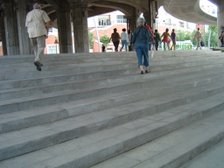
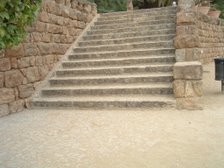

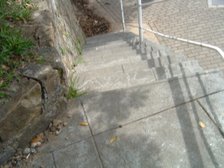
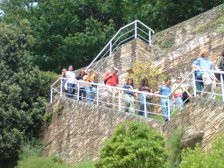
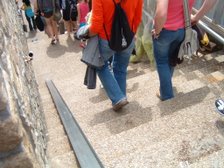
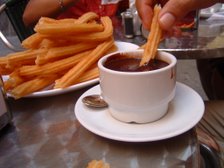
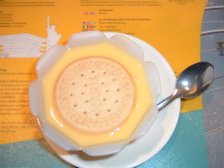

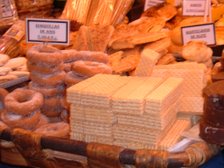
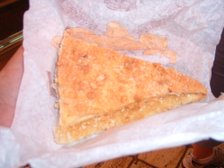




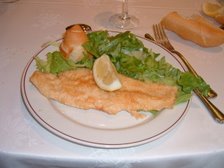
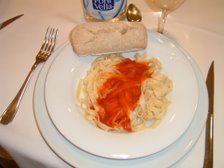
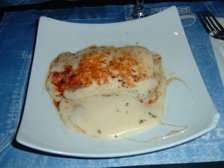
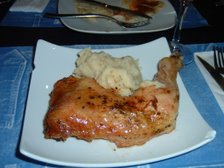

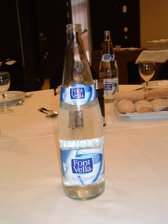
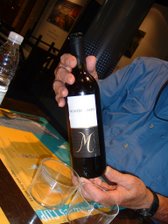
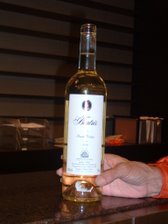
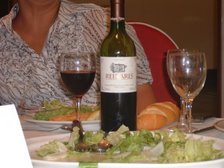
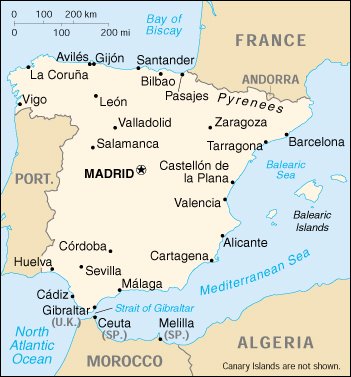
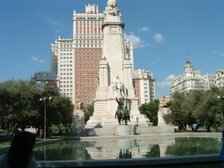
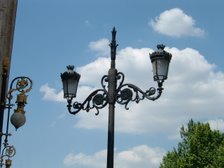
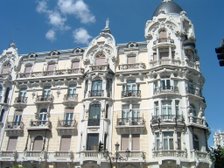
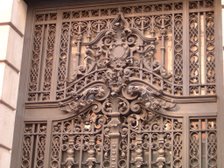
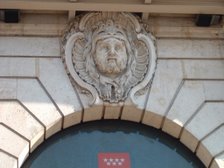
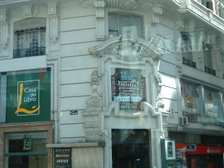
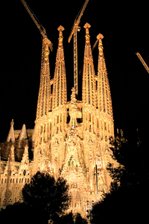
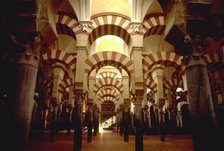
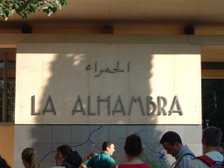
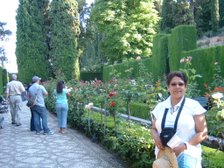
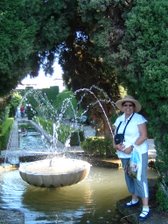
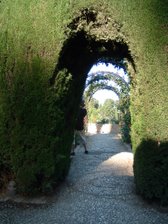
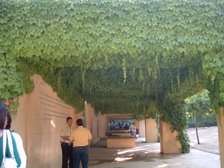
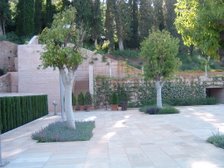
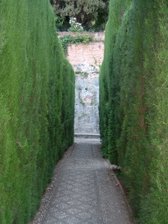

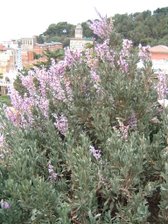
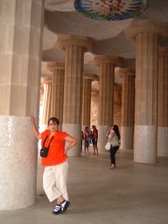
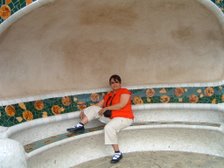
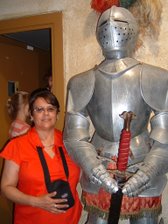

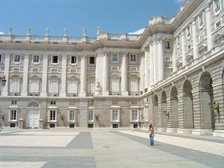

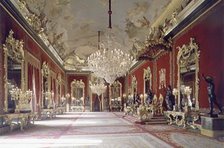
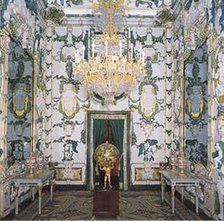
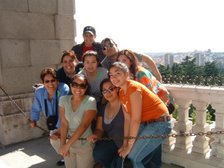


1 comment:
Sounds like you are working hard and really getting a lot out of this trip - way to go, remember to have some fun,
Michele
Post a Comment